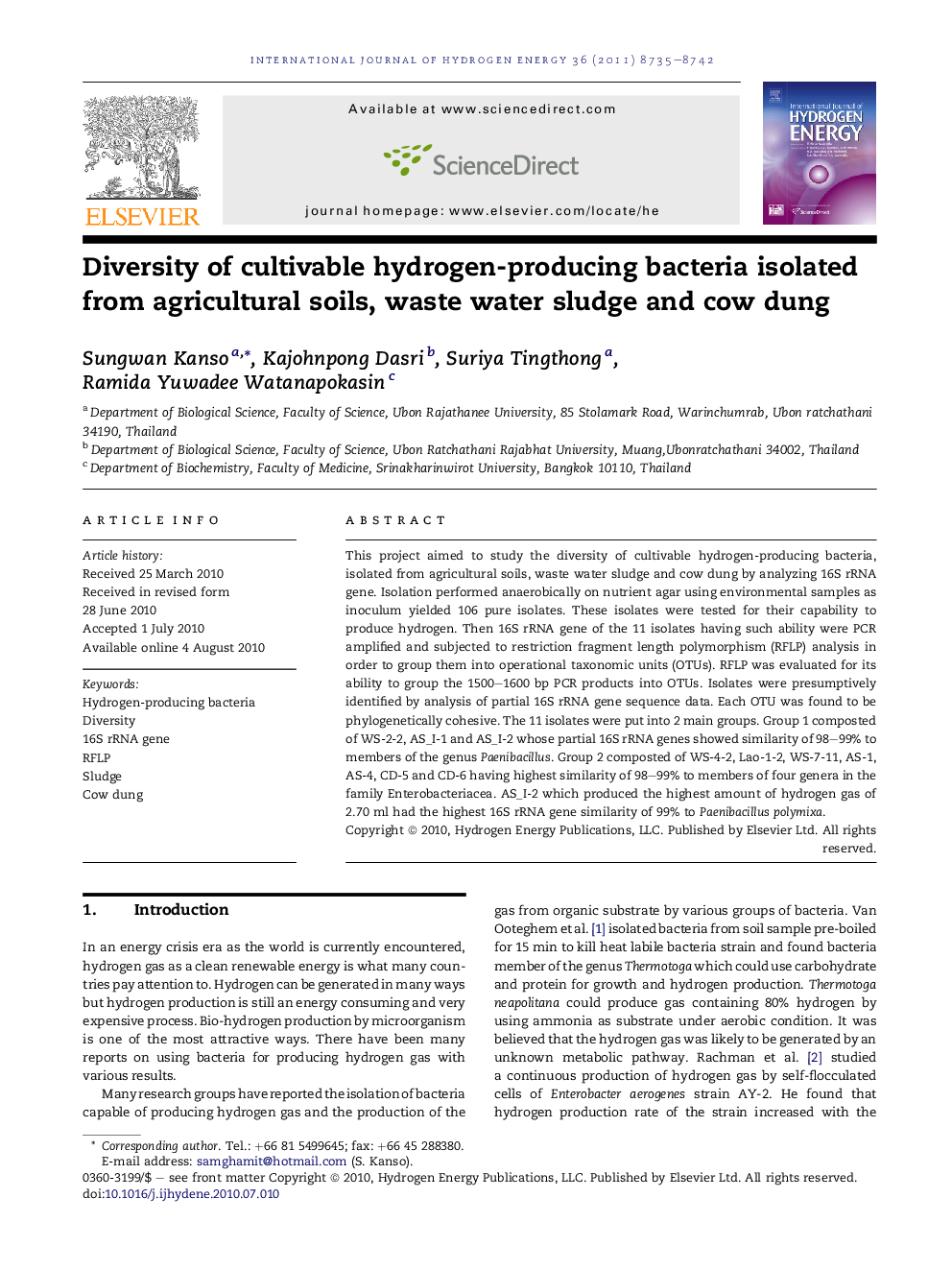| Article ID | Journal | Published Year | Pages | File Type |
|---|---|---|---|---|
| 1279194 | International Journal of Hydrogen Energy | 2011 | 8 Pages |
This project aimed to study the diversity of cultivable hydrogen-producing bacteria, isolated from agricultural soils, waste water sludge and cow dung by analyzing 16S rRNA gene. Isolation performed anaerobically on nutrient agar using environmental samples as inoculum yielded 106 pure isolates. These isolates were tested for their capability to produce hydrogen. Then 16S rRNA gene of the 11 isolates having such ability were PCR amplified and subjected to restriction fragment length polymorphism (RFLP) analysis in order to group them into operational taxonomic units (OTUs). RFLP was evaluated for its ability to group the 1500–1600 bp PCR products into OTUs. Isolates were presumptively identified by analysis of partial 16S rRNA gene sequence data. Each OTU was found to be phylogenetically cohesive. The 11 isolates were put into 2 main groups. Group 1 composted of WS-2-2, AS_I-1 and AS_I-2 whose partial 16S rRNA genes showed similarity of 98–99% to members of the genus Paenibacillus. Group 2 composted of WS-4-2, Lao-1-2, WS-7-11, AS-1, AS-4, CD-5 and CD-6 having highest similarity of 98–99% to members of four genera in the family Enterobacteriacea. AS_I-2 which produced the highest amount of hydrogen gas of 2.70 ml had the highest 16S rRNA gene similarity of 99% to Paenibacillus polymixa.
